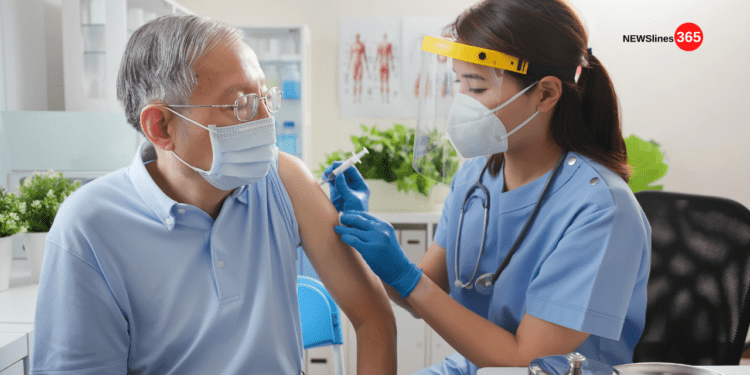As the winter season approaches, wewsline365.com is taking a closer look at the signs that indicate a potential resurgence of COVID-19 cases in the coming months. With the unprecedented winter season ahead of us It is important to be aware of the potential factors that could lead to a second wave of the virus. This article will analyze the eight signs that point to a possible resurgence of COVID-19 this winter.
As the COVID-19 pandemic continues to ravage the world, it has become increasingly clear that no country is immune to its effects. Despite the best efforts of governments and health organizations around the world. Thee virus has spread to every corner of the globe. This is a sobering fact because it shows how important it is to keep working hard to protect public health.
1. Arrival of the cold and flu season
First, the arrival of the cold and flu season could be a major factor in the surge of coronavirus cases. Winter brings colder temperatures and the flu season, which can put our immune systems at risk of being weakened by the virus. Additionally, the recent easing of restrictions in many areas of the country could also lead to more people gathering. Celebrations are on, and the new year is approaching, which could inadvertently increase the risk of the COVID-19 virus spreading.
2. Increase in travel
Second, the recent increase in travel could also be a contributing factor in the resurgence of the virus. With the holidays coming up, more people are taking trips and gathering at airports, bus stops, train stations, and subway stations. Which could lead to an increase in the spread of the COVID-19 virus. As winter weather approaches, it is important to be aware of the potential risks associated with more people gathering in close proximity. And that needs urgent attention by policymakers. WHO should come up with proper guidelines and protective measures.

3. limited or no testing
Third, the limited availability of testing could be another indicator that points to a possible resurgence of the virus. With limited testing options available, there is a greater chance of cases going undetected. Which could lead to a greater spread of the virus. Therefore, it is important that every government and policymaker make sure that testing is readily available, and that people are taking the necessary precautions to protect themselves and their loved ones.
4. low level of vaccination
Fourth, the low level of vaccination in many countries, even in the developed countries where the percentage of booster doses is below the satisfactory level. The availability of a vaccine in the underdeveloped countries, particularly in Africa, could be another contributing factor in the potential resurgence of the virus. As the vaccine continues to be developed and tested, it is important to remain aware of the potential risks associated with vaccine hesitancy. With the lack of vaccination initiatives, people will have to continue to practice social distancing and other safety measures to help limit the spread of the virus.
5. Sudden opening of schools and other educational institutions
Fifth, the sudden opening of schools and other educational institutions without any protective measures could be a contributing factor in the potential resurgence of the COVID-19 virus. With the opening of schools, colleges, and office spaces. More people are coming into very close proximity, which could lead to an increase in the spread of the virus. Therefore, it is important to remain aware of the potential risks associated with more people congregating in close proximity.
6. Rise of in-person activities
Sixth, the rise of in-person activities could be a contributing factor in the potential resurgence of the COVID-19 virus. With more people engaging in and interacting in in-person activities, there is a greater chance of people encountering the virus through congregations, parties, traveling. And ignoring the threat of COVID-19. Therefore, it is important to make sure that people are taking the necessary precautions to protect themselves and their loved ones while engaging in in-person activities.
7. Changing in weather
Seventh, the changing of the seasons could be another indicator of a possible virus resurgence. With the changing of the season, our bodies are more vulnerable to the virus. It is important to take the necessary precautions, such as handwashing, maintaining social distance, avoiding unnecessary travel, using a facemask. More importantly, getting a booster dose of the vaccine, to protect ourselves and our loved ones.
8. Highly mutable and infectious virus
And finally, the COVID-19 virus is a highly mutable and infectious virus that has caused a global pandemic. It’s essential to understand the magnitude of this virus and the implications it has for public health. As a professional in the medical field, it is my duty to provide an informed perspective on this virus and the risk it poses to individuals and society at large.

As winter approaches, it is important to remain aware of the potential indicators that could lead to a resurgence of the virus. With the potential for a new wave of the virus looming. It is important to take another booster dose and take the necessary precautions to protect ourselves and our loved ones. By taking the time to analyze the eight signs that point to a possible resurgence of COVID-19 this winter, we can be better prepared to protect ourselves and our loved ones.
Thank you for your time. https://newlines365.com














